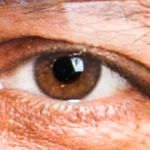- Home
- Photoshop ecosystem
- Discussions
- What does it mean to make an image a true black an...
- What does it mean to make an image a true black an...
What does it mean to make an image a true black and true white?
Copy link to clipboard
Copied
Hi, I have a client who has asked me to check their artworks colors. They ask that the black color must be true black and white must be a true white, for template upload and for print. The image they sent me, is a JPEG. I have opened the document in RGB 1998 and working in CMYK colors in photoshop....but I don't necessarily understand how to go about making sure AND changing the image to true black and true white. This is the image below. Any help or tips are appreciated. Thanks!
>colors in photoshop
[Here is the list of all Adobe forums... https://forums.adobe.com/welcome]
[Moved from generic Cloud/Setup forum to the specific Program forum... Mod]
Explore related tutorials & articles
Copy link to clipboard
Copied
I suggest you give serious consideration to using Adobe Illustrator and producing the image in flat color.
Copy link to clipboard
Copied
True black and true white are quite difficult denominations depending on if you are working in RGB space or in CMYK space.
I would guess, from my experience, that they mean that when printing they want the black printed as CMYK black (ie 0,0,0,100) and the white as CMYK white (ie 0,0,0,0) — paper colour, if the print engine does not do white, as most don’t.
The problem is that RGB to CMYK conversion is not easy, especially for black, as black is done by mixing all collours up — 100,100,100 would be black but because of impureties in the colour pigments, it’s more a brownish black.
Modern colour separation takes that into account, but even then, it is not guarentied that the colours are pure.
To add to the mess, it’s quite difficult to get the black back if it has been messed up.
In addition, as you got the image in JPEG there may be more artifacts present than you would wish.
What you can do:
You work in CMYK. Check first, by switching the K channel off, where you have impureties in the lines. Look at the picture at 100%.
If you are lucky, there are not a lot. If, however, the black lines still shine through, you may try on a separate colour layer (black in it’s final state) to correct the lines out. Select/mask should do most of the job. Do the same with white if necessary.
As of norman.sanders‘s suggestion, drawings like this are ideal candidates for Illustrator. With nice vectorization...and flat colours.
Copy link to clipboard
Copied
First: Mode > Grayscale. Second: Mode > Bitmap. Either of those are true black and white. Bitmap allows Diffusion Dither ( around 150 ppi ) that makes creating a copy in a copier easier.
Copy link to clipboard
Copied
If working in Illustrator is not an option, you may want to check out creating a file with four solid Spot Colors, where an additional channel is added for each of the colors in your image: two browns, a black and a red. (White is paper-white). Specific instructions appear in "Photoshop CS6 The Missing Manual" including saving the file as DCS, PSD or PDF, depending upon what you intend to do with the file. You may also Google "Photoshop Spot Color" for additional information. If the illustration is to be commercially printed, your lithographer could be a great help, as well.
Still, for crisp lines that appear in your illustration and the greatest flexibility, my original suggestion, Adobe Illustrator, is the best choice.
Copy link to clipboard
Copied
adriana85 wrote
The image they sent me is a JPEG.
Hi Adriana,
Even thought they sent a jpeg, they may have the Illustrator version. It's worth asking.
~ Jane
Find more inspiration, events, and resources on the new Adobe Community
Explore Now

